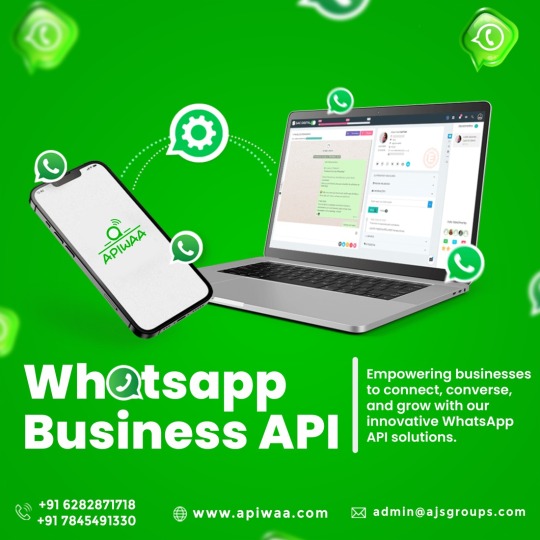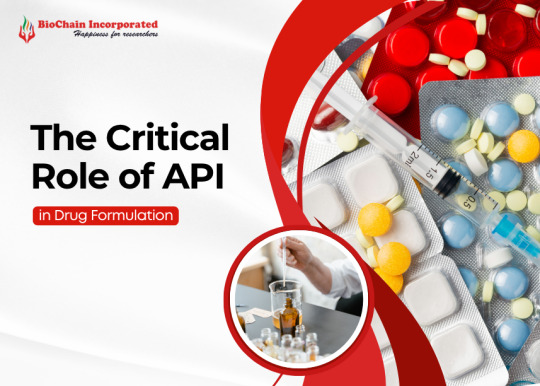#Healthcare API
Explore tagged Tumblr posts
Text
Global Healthcare API Market is expected to Reach a Market value of USD 343.8 million by 2033 at a CAGR of 3.7%.
The Global Healthcare API Market: A Comprehensive Analysis
Market Overview
The Global Healthcare API Market is on a trajectory of significant growth, expected to reach a value of USD 247.1 million by the end of 2024. Furthermore, projections indicate that the market will surge to USD 343.8 million by 2033, with a compound annual growth rate (CAGR) of 3.7% during the forecast period. This growth is indicative of the increasing reliance on digital solutions within the healthcare industry, where efficient data exchange and integration are paramount.
Healthcare API Market Growth Analysis
The emergence of Healthcare APIs has revolutionized the manner in which patient data is exchanged among healthcare providers. These APIs facilitate seamless access to vital patient information, enabling healthcare professionals to update and manage medical records swiftly. Before the advent of Electronic Health Record (EHR) systems, interoperability was a cumbersome process reliant on phone calls and fax machines. However, the proliferation of multiple EHR systems has often resulted in fragmented patient data. Advanced healthcare APIs are essential for enhancing care coordination and ensuring that comprehensive patient records are maintained, especially vital in the context of value-based care models.
Key Takeaways
Get a Free PDF Sample Copy of this Report@ https://dimensionmarketresearch.com/report/healthcare-api-market/request-sample
Use Cases
Market Dynamics
The growth of the healthcare API market is driven by continuous technological advancements, increased demand for healthcare integration, and an uptick in activities from EHR vendors and healthcare IT startups. The use of APIs in conjunction with EHR systems supports streamlined access to health data, resulting in reduced costs, improved medication supply chain management, and enhanced accessibility to medical test data, thereby elevating the overall efficiency of healthcare administration.
However, several challenges pose restraints to market expansion. A notable shortage of skilled professionals, alongside concerns over data security, presents significant hurdles. Inadequate IT infrastructure, lack of essential API tools, and poor network connectivity further impede growth. Particularly in emerging economies, underdeveloped public IT infrastructure remains a barrier to market development.
Research Scope and Analysis
By Deployment Mode
The healthcare API market can be segmented based on deployment mode into cloud-based APIs and on-premise APIs. In 2024, cloud-based APIs are expected to dominate market share due to the availability of storage solutions for organizing patient and hospital data, facilitating easy access during critical situations.
Conversely, on-premise healthcare APIs are projected to retain a substantial revenue share, primarily due to their advantages in data privacy and security, ensuring a lower risk of data breaches. Organizations benefit from retaining complete control over their healthcare software, coupled with easy software installation and the potential for future data reprocessing.
By Service
The services within the healthcare API market include EHR access, appointments, payment, remote patient monitoring, and wearable medical devices. Among these, EHR access is predicted to lead the market in 2024. APIs enable smooth integration of EHR data with other platforms, enhancing data exchange with third parties. EHR vendors are increasingly incorporating APIs into their systems to support value-based patient care, driving widespread adoption.
The remote patient monitoring segment is anticipated to experience rapid growth, primarily spurred by the heightened interest during the COVID-19 pandemic. As healthcare providers focus on minimizing contamination risks, they are adopting connected health solutions, often utilizing API-enabled patient engagement platforms that personalize treatment options based on historical medical records.
By End Use
The healthcare providers segment is expected to emerge as the top revenue contributor in 2024. This segment includes clinics, hospitals, and other distribution firms that utilize APIs to securely store critical medical records and patient information, ensuring accessibility during emergencies. Additionally, the healthcare payers segment is projected to see significant growth during the analysis period.
Healthcare API Market End User Analysis
Integrated APIs facilitate swift access to essential data for healthcare payers and providers through customized processes. By streamlining follow-up appointments and patient invoicing, APIs enhance operational efficiency within the healthcare ecosystem, allowing for secure management of patient health information and billing details without excessive administrative burdens.
Regional Analysis
North America
North America is anticipated to lead the healthcare API market, capturing a substantial revenue share of approximately 37.6% in 2024. Factors such as supportive policies for healthcare API deployment and high digital literacy rates significantly contribute to this dominance. The region boasts advanced healthcare infrastructure, which includes integrated EHR systems, and the growing adoption of healthcare APIs by major organizations further propels demand.
Europe
Europe is projected to experience substantial growth during the forecast period, driven by a robust healthcare infrastructure and the advent of transformative technologies, such as the Internet of Things (IoT). This evolution is likely to facilitate the rapid adoption and integration of healthcare APIs, paving the way for enhanced connectivity and efficiency within the healthcare landscape.
Asia-Pacific
The Asia-Pacific region is emerging as a promising market for healthcare APIs. With increasing investments in healthcare IT and a growing emphasis on digital transformation, countries like China, India, and Japan are witnessing significant adoption of API solutions to enhance healthcare services.
Latin America and Middle East & Africa
In Latin America, the healthcare API market is expected to grow steadily, supported by rising healthcare expenditures and the need for efficient data management solutions. Meanwhile, the Middle East and Africa are gradually adopting healthcare APIs, driven by government initiatives aimed at improving healthcare access and quality.
Competitive Landscape
The Global Healthcare API Market features intense competition among established technology giants and emerging players. Key market participants are focused on delivering comprehensive API solutions that facilitate seamless integration and advanced functionalities, while newer entrants strive to provide specialized services tailored to the unique needs of the healthcare sector. This competitive environment fosters innovation and efficiency as companies vie for market share and aim to meet the evolving demands of healthcare providers and patients globally.
Prominent Players in the Market
Recent Developments
Recent advancements in the healthcare API sector indicate a dynamic and evolving landscape:
FAQs
1. What is the projected growth rate of the Global Healthcare API Market?
The Global Healthcare API Market is anticipated to grow at a CAGR of 3.7%, reaching a value of USD 343.8 million by 2033.
2. Which segment is expected to dominate the market in terms of deployment mode?
The cloud-based API segment is expected to lead in 2024 and maintain its dominance throughout the forecast period.
3. What are some of the key use cases for Healthcare APIs?
Key use cases include patient data access, appointment scheduling, telemedicine consultations, and health monitoring and alerts.
4. Which region is predicted to hold the largest market share in the Global Healthcare API Market?
North America is expected to command a significant market share of 37.6% in 2024.
5. What are the main challenges facing the Global Healthcare API Market?
Challenges include a shortage of skilled professionals, data security concerns, inadequate IT infrastructure, and underdeveloped public IT systems in emerging economies.
Conclusion
The Global Healthcare API Market is poised for notable growth, driven by technological advancements and the increasing demand for efficient data integration within the healthcare sector. With significant contributions from healthcare providers, favorable market conditions in North America, and an expanding base of innovative players, the future looks promising. However, addressing challenges such as data security and the shortage of skilled professionals will be critical to unlocking the full potential
#Healthcare API#Health Tech#Digital Health#EHR#Interoperability#Patient Care#Data Integration#Healthcare Innovation#APIs#Cloud Technology#Telemedicine#Remote Monitoring#Health Data
0 notes
Text
#API marketplace banking#API gateway integration#api sandbox for banking#top api marketplace#healthcare api
0 notes
Text
Get Chatbot service for business with APIWAA
In today’s fast-paced digital world, businesses are constantly looking for innovative ways to connect with their customers more effectively and efficiently. One of the most powerful tools available to achieve this is the APIWAA. By integrating APIWAA into your business operations, you can enhance communication, improve customer service, and drive engagement to new heights.
What is APIWAA?
APIWAA is a powerful communication tool that allows businesses to integrate WhatsApp messaging into their existing systems and workflows. Unlike the standard WhatsApp Business app, the API is designed for medium to large businesses, offering scalability and a range of advanced features that streamline customer interactions. It provides a programmable interface that enables businesses to send and receive messages, automate responses, and manage communication at scale.

1.Enhanced Customer Communication: With APIWAA, businesses can offer real-time customer support and engagement. The ability to send instant replies to customer queries, provide order updates, and share promotional content ensures a smooth and efficient communication process. This level of responsiveness helps build trust and loyalty among customers.
2.Automation and scalability: The APIWAA allows for the automation of routine tasks, such as sending appointment reminders, order confirmations, and personalized messages based on customer interactions. This not only saves time but also ensures consistent and accurate communication. The API’s scalability means it can handle a large volume of messages simultaneously, making it ideal for businesses of all sizes.
3.Rich Media support: Unlike traditional SMS, APIWAA supports rich media messages, including images, videos, documents, and interactive buttons. This capability allows businesses to create engaging and visually appealing messages that can capture the attention of their audience more effectively.
4.Secure and Reliable: Security is a top priority for APIWAA. The platform uses end-to-end encryption to protect messages and data, ensuring that customer information remains private and secure. This level of security helps businesses comply with data protection regulations and provides peace of mind to both the business and its customers.
Use Cases: Customer Support: Provide instant responses to customer inquiries, resolve issues quickly, and offer support 24/7.
Marketing Campaigns: Send targeted promotions, offers, and updates directly to customers’ WhatsApp accounts, ensuring high open and engagement rates.
Order Notifications: Keep customers informed with real-time updates on order status, shipping details, and delivery confirmations.
Appointment Reminders: Automate appointment reminders to reduce no-shows and improve customer experience.
Conclusion: The APIWAA is a game-changer for businesses looking to enhance their communication strategy. By integrating this powerful tool, businesses can improve customer engagement, streamline operations, and ultimately drive growth. Whether you’re a small startup or a large enterprise, the APIWAA offers the flexibility and functionality needed to stay ahead in today’s competitive market. Embrace the future of communication with APIWAA and unlock your business’s full potential.
#whatsapp api#api#whatsapp marketing#apiwaa#whatsapp chatbot#healthcare chatbots market#whatsapp automation
3 notes
·
View notes
Text
In today’s digital-first world, businesses are under immense pressure to optimize operations, reduce costs, and improve partner communication. EDI Software Solutions have emerged as the backbone of digital transformation, enabling secure and standardized data exchange across systems and partners through electronic data interchange. From healthcare EDI to supply chain automation, the scope and relevance of EDI systems are expanding fast.However, not all EDI solutions are created equal. The right EDI tool can make a monumental difference in efficiency, compliance, and collaboration. Whether you're integrating with EMR software solutions, EHR software solutions, or simply looking to enhance B2B integration, this guide outlines the top 10 must-have features in a modern EDI software solution.
#EDI Software Solutions#EDI Integration#Electronic Data Interchange#EMR Software Solutions#EHR Software Solutions#Healthcare EDI#B2B Integration#Supply Chain Automation#EDI Features#EDI Tools#Custom Healthcare Software#HL7 Integration#X12 Standard#API Integration#Healthcare IT Solutions#Digital Transformation#Custom Software Development#Data Exchange Solutions#Cloud-Based EDI#EDI for Healthcare
0 notes
Text

As we grow, we collaborate with trusted partners and clients who resonate with our vision and play a key role in propelling us forward. A commitment to quality and operational excellence lies at the heart of our processes. Our offerings span Pharmaceuticals, Agro solutions, Specialty Chemicals, along with comprehensive CRO and CDMO services.
#bioscience#OctaneX Labs#API clinical trial management system#intermediates manufacturers#chemicals API#fine chemical#synthesis#CDMO Companies#CDMO India#life science chemicals#pharmaceutical fine chemicals#capsules#chemicals#cro#cdmo#cdmo companies in india#cdmo services#science#chemical synthesis#chemistry#healthcare#cro services#pharma industry#pharma#pharmaceutical#big pharma#contract development#custom synthesis#custom development
0 notes
Text
Ruxolitinib Intermediates: Enabling Targeted Therapy with Quality Manufacturing from Vidgastech
In the rapidly evolving world of pharmaceutical research and precision medicine, Ruxolitinib has gained significant attention as a JAK1/JAK2 inhibitor used to treat conditions like myelofibrosis, polycythemia vera, and other rare blood cancers. To ensure effective and scalable drug development, the demand for high-quality Ruxolitinib intermediates has surged — and that’s where Vidgastech leads the way.
🔬 What Are Ruxolitinib Intermediates?
Ruxolitinib intermediates are the essential chemical compounds used during the synthesis of the final active pharmaceutical ingredient (API), Ruxolitinib. These intermediates must be manufactured with strict quality standards to ensure:
Purity and consistency
Scalability for formulation
Compliance with global pharmacopeia
🏭 Vidgastech: A Trusted Source for Pharma Intermediates
Vidgastech has established itself as a reputable manufacturer and exporter of pharmaceutical intermediates in India, specializing in cutting-edge molecules like Ruxolitinib intermediates. With modern production facilities, a skilled R&D team, and commitment to regulatory standards, Vidgastech ensures:
GMP-compliant manufacturing
Customized synthesis on request
Prompt global delivery
💡 Why Choose Vidgastech for Ruxolitinib Intermediates?
High Purity Compounds: Ensuring effectiveness in the final API.
Regulatory Compliance: Following stringent quality checks.
Custom Solutions: Tailored synthesis as per client specifications.
Reliable Supply Chain: On-time delivery across the globe.
🌍 Applications in Oncology
Ruxolitinib is a vital component in the treatment of:
Myelofibrosis
Polycythemia Vera
Graft-Versus-Host Disease (GVHD)
Ongoing trials for autoimmune conditions
With the growth of targeted therapies, Ruxolitinib intermediates play a foundational role in pharmaceutical innovation.
🔗 Connect with Vidgastech
If you're a pharmaceutical manufacturer, researcher, or procurement manager looking for trusted sources of Ruxolitinib intermediates, Vidgastech offers scalable solutions tailored to your needs. 🌐 Website: https://www.vidgastech.com
#Ruxolitinib Intermediates#Pharmaceutical Intermediates#API Manufacturing#JAK Inhibitor Intermediates#Ruxolitinib Suppliers India#Vidgastech#Oncology Intermediates#Drug Synthesis#Pharma Chemicals#GMP Manufacturing#Custom Synthesis#Myelofibrosis Treatment#Pharmaceutical Exporters#Life Science Chemicals#Pharma R&D India#High Purity Intermediates#Bulk Drug Intermediates#Specialty Chemicals Manufacturer#Healthcare Industry India#Pharmaceutical Industry News
0 notes
Text

Why API is the most critical component in any drug formulation
In pharmaceutical science, the API is the principal element that makes a drug the purpose, efficacy, and therapeutic action. While excipients (inactive substances) support the delivery and stability of a drug, it is the API that defines its function.
#activepharmaceuticalingredientsuppliers#apisupplier#activepharmaceuticalingredients#apisupplierinindia#api#pharmaapi#drugmanufacturing#drugdevelopment#pharmaceutical#healthcare#biologicsapi#activepharmaceuticalingredientsmarket
0 notes
Text
Ensuring Resilient Security for Autonomous AI in Healthcare
New Post has been published on https://thedigitalinsider.com/ensuring-resilient-security-for-autonomous-ai-in-healthcare/
Ensuring Resilient Security for Autonomous AI in Healthcare


The raging war against data breaches poses an increasing challenge to healthcare organizations globally. As per current statistics, the average cost of a data breach now stands at $4.45 million worldwide, a figure that more than doubles to $9.48 million for healthcare providers serving patients within the United States. Adding to this already daunting issue is the modern phenomenon of inter- and intra-organizational data proliferation. A concerning 40% of disclosed breaches involve information spread across multiple environments, greatly expanding the attack surface and offering many avenues of entry for attackers.
The growing autonomy of generative AI brings an era of radical change. Therefore, with it comes the pressing tide of additional security risks as these advanced intelligent agents move out of theory to deployments in several domains, such as the health sector. Understanding and mitigating these new threats is crucial in order to up-scale AI responsibly and enhance an organization’s resilience against cyber-attacks of any nature, be it owing to malicious software threats, breach of data, or even well-orchestrated supply chain attacks.
Resilience at the design and implementation stage
Organizations must adopt a comprehensive and evolutionary proactive defense strategy to address the increasing security risks caused by AI, especially inhealthcare, where the stakes involve both patient well-being as well as compliance with regulatory measures.
This requires a systematic and elaborate approach, starting with AI system development and design, and continuing to large-scale deployment of these systems.
The first and most critical step that organizations need to undertake is to chart out and threat model their entire AI pipeline, from data ingestion to model training, validation, deployment, and inference. This step facilitates precise identification of all potential points of exposure and vulnerability with risk granularity based on impact and likelihood.
Secondly, it is important to create secure architectures for the deployment of systems and applications that utilize large language models (LLMs), including those with Agentic AI capabilities. This involves meticulously considering various measures, such as container security, secure API design, and the safe handling of sensitive training datasets.
Thirdly, organizations need to understand and implement the recommendations of various standards/ frameworks. For example, adhere to the guidelines laid down by NIST’s AI Risk Management Framework for comprehensive risk identification and mitigation. They could also consider OWASP’s advice on the unique vulnerabilities introduced by LLM applications, such as prompt injection and insecure output handling.
Moreover, classical threat modeling techniques also need to evolve to effectively manage the unique and intricate attacks generated by Gen AI, including insidious data poisoning attacks that threaten model integrity and the potential for generating sensitive, biased, or inappropriately produced content in AI outputs.
Lastly, even after post-deployment, organizations will need to stay vigilant by practicing regular and stringent red-teaming maneuvers and specialized AI security audits that specifically target sources such as bias, robustness, and clarity to continually discover and mitigate vulnerabilities in AI systems.
Notably, the basis of creating strong AI systems in healthcare is to fundamentally protect the entire AI lifecycle, from creation to deployment, with a clear understanding of new threats and an adherence to established security principles.
Measures during the operational lifecycle
In addition to the initial secure design and deployment, a robust AI security stance requires vigilant attention to detail and active defense across the AI lifecycle. This necessitates for the continuous monitoring of content, by leveraging AI-driven surveillance to detect sensitive or malicious outputs immediately, all while adhering to information release policies and user permissions. During model development and in the production environment, organizations will need to actively scan for malware, vulnerabilities, and adversarial activity at the same time. These are all, of course, complementary to traditional cybersecurity measures.
To encourage user trust and improve the interpretability of AI decision-making, it is essential to carefully use Explainable AI (XAI) tools to understand the underlying rationale for AI output and predictions.
Improved control and security are also facilitated through automated data discovery and smart data classification with dynamically changing classifiers, which provide a critical and up-to-date view of the ever-changing data environment. These initiatives stem from the imperative for enforcing strong security controls like fine-grained role-based access control (RBAC) methods, end-to-end encryption frameworks to safeguard information in transit and at rest, and effective data masking techniques to hide sensitive data.
Thorough security awareness training by all business users dealing with AI systems is also essential, as it establishes a critical human firewall to detect and neutralize possible social engineering attacks and other AI-related threats.
Securing the future of Agentic AI
The basis of sustained resilience in the face of evolving AI security threats lies in the proposed multi-dimensional and continuous method of closely monitoring, actively scanning, clearly explaining, intelligently classifying, and stringently securing AI systems. This, of course, is in addition to establishing a widespread human-oriented security culture along with mature traditional cybersecurity controls. As autonomous AI agents are incorporated into organizational processes, the necessity for robust security controls increases. Today’s reality is that data breaches in public clouds do happen and cost an average of $5.17 million , clearly emphasizing the threat to an organization’s finances as well as reputation.
In addition to revolutionary innovations, AI’s future depends on developing resilience with a foundation of embedded security, open operating frameworks, and tight governance procedures. Establishing trust in such intelligent agents will ultimately decide how extensively and enduringly they will be embraced, shaping the very course of AI’s transformative potential.
#access control#Advice#Agentic AI#agents#ai#AI AGENTS#AI in healthcare#ai security#AI systems#API#applications#approach#Attack surface#attackers#attention#autonomous#autonomous ai#awareness#Bias#breach#Business#challenge#change#chart#CitiusTech#classical#clouds#compliance#comprehensive#container
0 notes
Text
One of the Top Healthcare API Companies – Treatment.com AI Inc.
Treatment.com AI Inc. is one of the leading healthcare API companies, providing advanced solutions to streamline data exchange and enhance patient care. To learn more about healthcare api companies, visit the website today:
0 notes
Text
1 note
·
View note
Text
India's CDMO Market: A Blueprint for Growth amid Asia's Healthcare Boom
India's CDMO Market: A Blueprint for Growth amid Asia's Healthcare Boom @neosciencehub #India #CDMO #Healthcare #API #Sciencenews #neosciencehub
India’s Contract Development and Manufacturing Organization (CDMO) market is on the brink of a substantial transformation. With current valuations at approximately USD 7 billion, forecasts suggest that this sector will double to nearly USD 14 billion by 2028. This remarkable growth presents significant implications not only for the Indian pharmaceutical landscape but also for global supply chains…
0 notes
Text
Creating a Patient-Centric Ecosystem with FHIR APIs

FHIR APIs allow these purposes to securely alternate information with healthcare techniques, making a extra holistic view of a person’s wellbeing. For example, a health monitoring app may share related information with a affected person’s EHR, giving healthcare suppliers insights into the affected person’s exercise ranges and general well-being.
0 notes
Text
Leading API Manufacturer in India | Vaibhav Fine Chem Looking for a reliable API manufacturer in India? Vaibhav Fine Chem is a trusted leader in the pharmaceutical industry, offering high-quality Active Pharmaceutical Ingredients (APIs) that meet global standards. With a commitment to innovation, quality, and sustainability, we deliver solutions for the healthcare sector, ensuring safety and effectiveness. Explore our offerings and discover why we're a preferred choice for pharmaceutical manufacturing.
#API Manufacturer in India#Pharmaceutical APIs#Active Pharmaceutical Ingredients#Vaibhav Fine Chem#High-quality API#Healthcare solutions#Pharmaceutical manufacturing India
0 notes
Text
youtube
The Global Active Pharmaceutical Ingredients (API) Market is projected to achieve a revenue of USD 342.9 billion by 2030, expanding at a steady CAGR of 6.5% from 2022 to 2030. The market's growth is fueled by increasing demand for highly potent APIs and advancements in pharmaceutical manufacturing.
#activepharmaceuticalingredient#activepharmaceutical#api#apimarket#healthcare#healthcareresearch#pharmaceutical#pharmacy#pharmaceuticalscience#pharmaceuticalresearch#marketresearchreport#marketresearch#acumenresearchandconsulting#marketresearchcompany#news#Youtube
0 notes
Text

Our journey of progress is strengthened by alliances with esteemed partners and clients who share our goals and help sustain our growth. Upholding high standards of quality and efficiency is central to our approach. We provide a diverse portfolio covering Pharmaceuticals, Agro-products, Specialty Chemicals, and full-scale CRO and CDMO solutions.
#bioscience#OctaneX Labs#API clinical trial management system#intermediates manufacturers#chemicals API#fine chemical#synthesis#CDMO Companies#CDMO India#life science chemicals#pharmaceutical fine chemicals#capsules#chemicals#cro#cdmo#cdmo companies in india#cdmo services#science#chemical synthesis#chemistry#healthcare#cro services#cdmo lab#cdmo telangana company#cro in hyderabad#cro service#cro lab#cro industry#cro strategies#custom synthesis
0 notes
Text
did a text review comparison for my current academic project and applied for healthcare today :)
#ive been avoiding apying for healthcare bc executive dysfunction but i did it and im proud of myself even though it was just an online form#and i do feel silly for avoiding it for so long but#i will not depreciate myself i am proud for getting it done!!!#%
1 note
·
View note